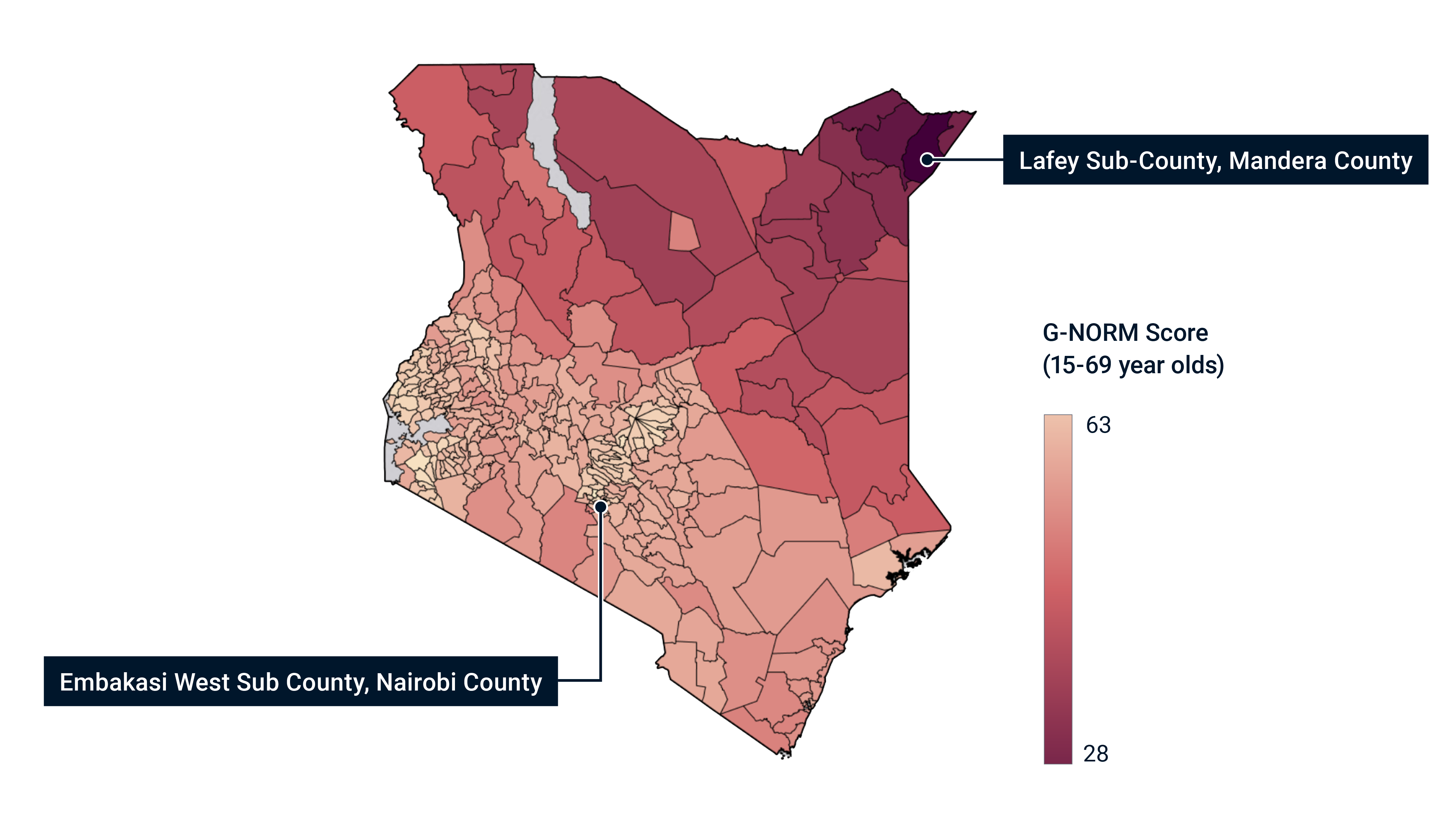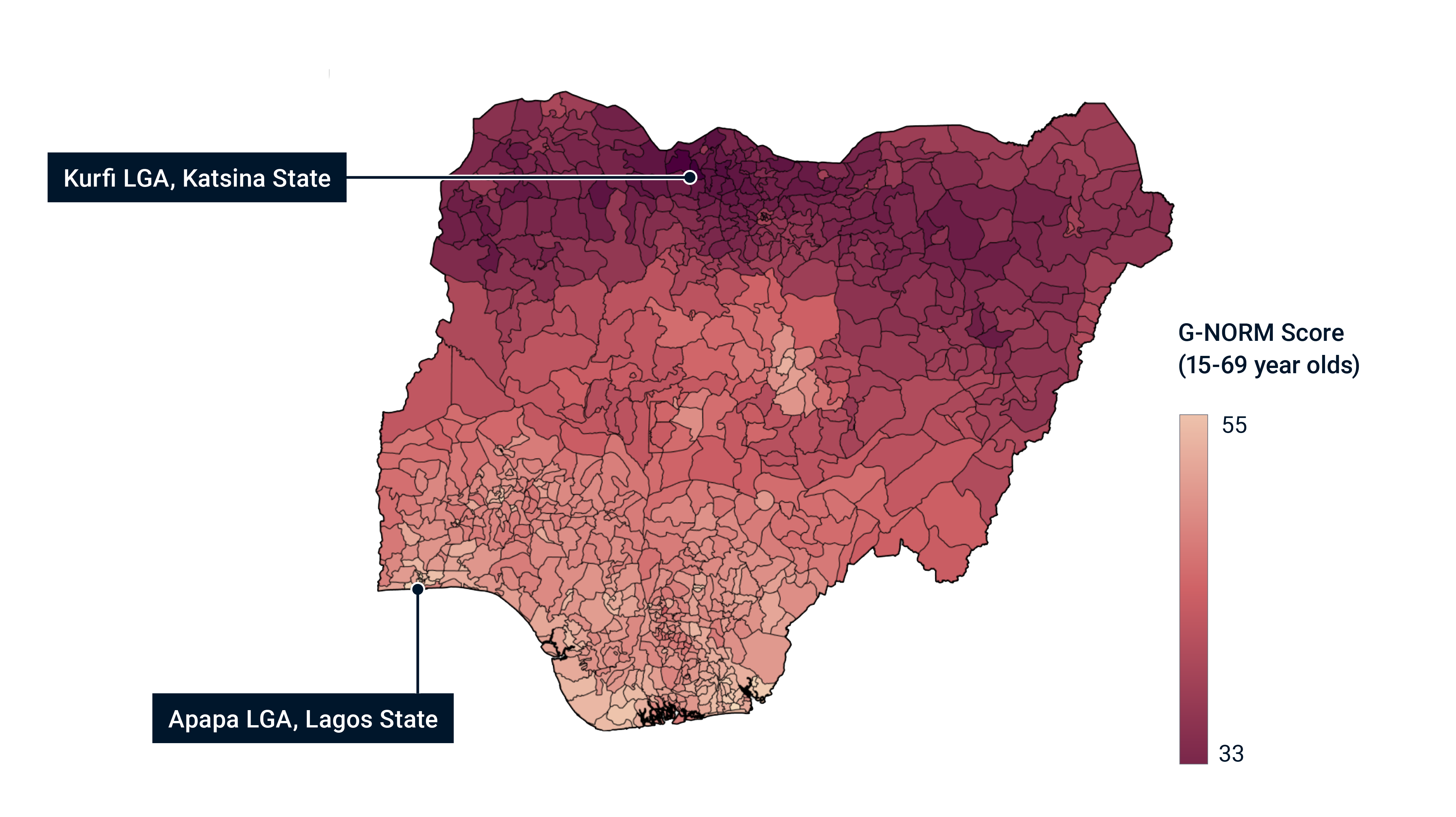What Powers Fraym’s Gender Data Engine


Gender Norms are Now Measurable
Gender inequality continues to restrict the socio-economic freedoms, health, and participation of women and girls, despite global commitments such as the Sustainable Development Goals. For instance, over 1 in 10 women and girls aged 15-49 worldwide still experience sexual and/or physical violence from an intimate partner. Additionally, women, on average, earn about 20% less than men globally. These statistics highlight persistent social and economic disparities, which are, in part, driven by entrenched gender norms—societal expectations about what men and women should or shouldn’t do. These norms have a profound impact on economic opportunities, decision-making power, and overall well-being, especially for women and girls.
Understanding how gender norms shape communities and individual lives, and how they evolve over time, is crucial for advancing gender equality. While gender norms were once considered difficult to measure and unchangeable, recent research has challenged this view. Advances in measuring social norms, including gender norms, have led to tools like the G-NORM scale. Developed in India and later adapted for Nepal and Uganda, the G-NORM scale distinguishes between descriptive and injunctive norms and captures social sanctions related to gender inequality. However, it has been validated mainly for women of reproductive age with a regional focus, limiting its use for national-level insights and among sub-groups like adolescent boys and young men (ABYM) and older adults.
The Gender Data Engine (GDE) addresses this gap by providing large-scale, population-level data on gender norms for the 15–69-year-old population. Moreover, GNDE is revolutionary in its ability to combine spatial data with survey data using machine learning to produce hyper-local maps. This enables us to map gender equality norms at any geographic level, offering detailed and localized data that can help policymakers, researchers, and advocates design more effective interventions and policies to challenge harmful gender norms and promote equality.
The data engine now features the G-NORM scale as a global measure of gender equality for Kenya and Nigeria. We undertook a rigorous validation process, including exploratory and confirmatory factor analysis, assessing Cronbach’s alpha, and ensuring contextual relevance through expert consultations. The scale scores range from 0 to 100, with higher values indicating greater support for gender equality. Predicted factor scores for the 15–69-year-old population were generated using confirmatory factor analysis (CFA). Spatial interpolation then estimated hyper-local values, with scores aggregated down to the ward level in Kenya and Nigeria.
To better understand the distribution of gender equality norms, refer to the following maps, which illustrate the regional scores across Kenya and Nigeria.


The maps highlight varying levels of support for gender equality norms across different regions in Kenya (Figure 1) and Nigeria (Figure 2), with greater variation observed at the sub-county level in Kenya compared to Nigeria. In Kenya, the lowest score was recorded in Lafey sub-county, at 28.3, while Embakasi West achieved the highest score, at 62.8. In Nigeria, Kurfi LGA had the lowest score of 32.9, and Apapa LGA recorded the highest score, reaching 54.7. These scores suggest that support for gender equality in communities across both countries ranges from low to moderate. While progress has been made in some areas, significant work remains to be done across the spectrum.
Excitingly, the GNDE will soon be available as a public interactive dashboard, allowing users to explore gender norms data in real-time. This platform will also have the capability to track changes in gender norms over time. These features will provide valuable insights into how gender norms evolve and the impact of interventions and policies, helping to guide future strategies for promoting gender equality. The GNDE represents a significant step forward in our global effort to empower women and girls and foster more equitable societies. By visualizing gender norms at a granular level and tracking changes over time, we can better understand and address the unique challenges faced by different communities, particularly women and girls. Explore the GNDE data to see how gender norms are mapped in your area and join us in driving meaningful change.
If you have any questions or would like to learn more about how the scale was validated and scores were constructed, please feel free to contact:
Neetu John, PhD (Pronouns: She/Her)
Principal for Gender Research & Programs, Fraym
Email:[email protected]
1 UN Women (2022): Progress on The Sustainable Development Goals: The Gender Snapshot 2022. Retrieved from https://www.unwomen.org/en/digital-library/publications/2022/09/progress-on-the-sustainable-development-goals-the-gender-snapshot-2022.
2 International Labour Organization. (2024. The gender pay gap. https://www.ilo.org/resource/other/gender-pay-gap
3 Sedlander, E., Bingenheimer, J. B., Long, M. W., Swain, M., & Rimal, R. N. (2022). The G-NORM scale: development and validation of a theory-based gender norms Scale. Sex roles, 87(5), 350-363.